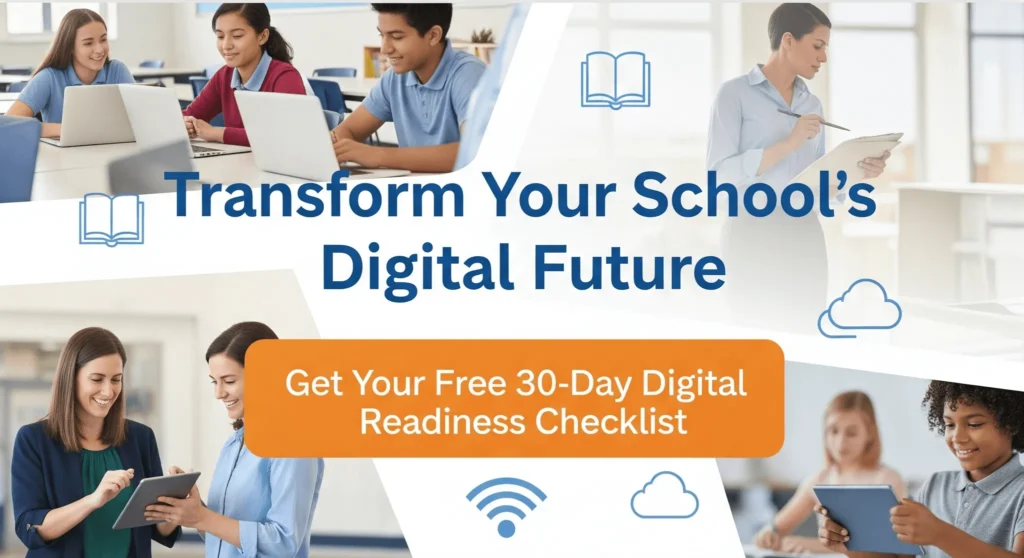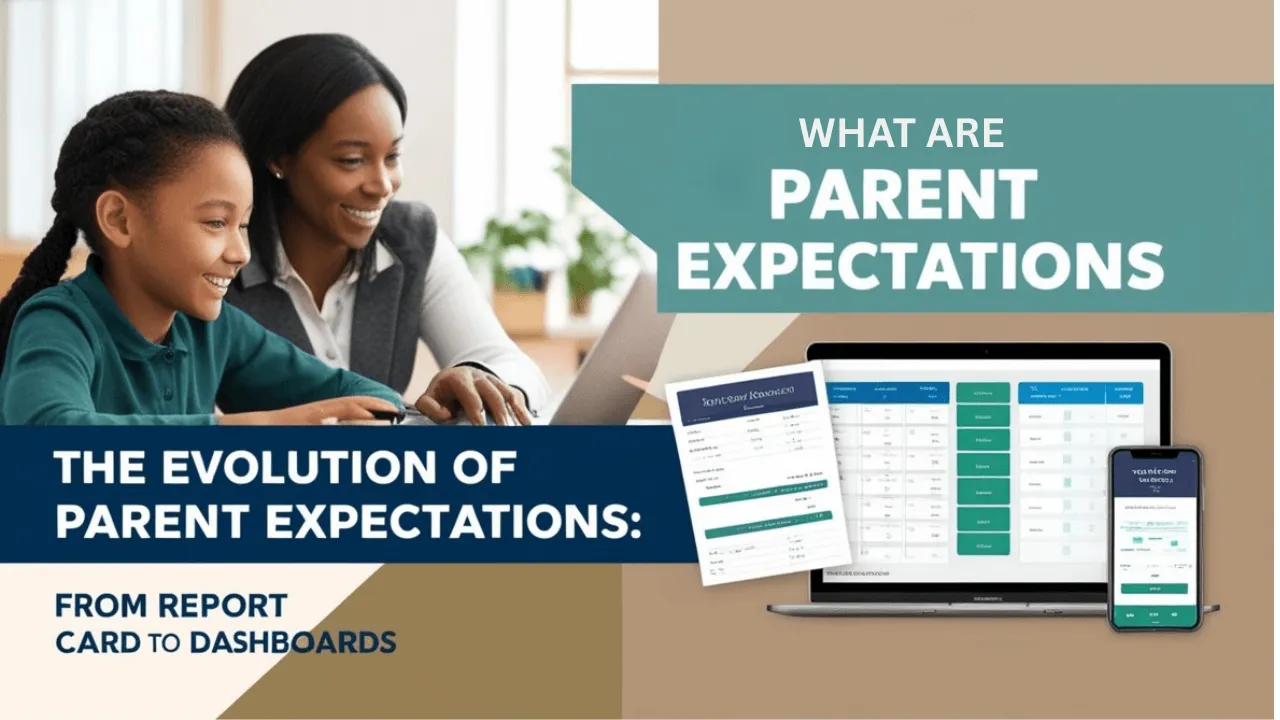Table of Contents
- Introduction
- What Is a School Parent Portal?
- Key Features of an Effective School Parent Portal
- Designing Dashboards That Match Parent Expectations
- How to Implement a School Parent Portal
- Measuring Success: KPIs for the School Parent Portal
- Quick Wins with the School Parent Portal
- Privacy, Equity and Ethics in Parent Dashboards
- Real-World Examples
- Frequently Asked Questions (FAQ)
- Conclusion: Adopt a School Parent Portal to Match Modern Parent Expectations
- Call-to-Action
Introduction
Parents used to wait for termly report cards. That slow rhythm no longer works. Today families expect answers immediately. The shift is painful for schools that still rely on paper and phone calls. A modern school parent portal solves this. It gives parents real-time grade updates, easy parent-teacher communication, and visual dashboards that answer questions without a phone call. In this post, I explain how the school parent portal evolved, why parents expect dashboards today, and how schools can design, launch, and measure parent-facing dashboards that build trust.
Why the school parent portal replaced the old report-card rhythm
Report cards were clear, but slow. Parents got a snapshot every few months. Now life moves faster. Parents use apps for banking, health, and shopping — they expect the same speed from schools. The school and parent portal answers three big parent needs:
- Visibility: Parents want to see attendance, grades, and assignments any time.
- Reassurance: Quick updates reduce anxiety and avoid late surprises.
- Conversation starters: Real-time data helps teachers and families focus on solutions, not surprises.
A short history — from envelopes to ecosystems
- 1990s: Periodic paper report cards, phone calls for urgent matters.
- 2000s: Early parent portals (login-based) with static gradebooks.
- 2010s: Mobile apps and SIS integrations — parents began getting push notifications.
- 2020s: Dashboards, analytics, and expectations for personalized, real-time insight.
What Is a School Parent Portal?
What a modern school parent portal includes
The school parent portal is an online interface that gives families controlled access to student information. At its best, it is more than a read-only page — it’s a communication hub and a decision-support tool. Core components:
- Real-time gradebook and assignment trackers (real-time grade updates)
- Attendance and punctuality logs
- Messaging and parent-teacher communication tools
- Calendar and event sign-ups
- Fee payments, permission slips, and document uploads
- Visual dashboards (growth trends, learning goals, standards mastery)
Why dashboards matter inside the school parent portal
Dashboards convert raw data into meaning. A chart showing a downward trend in homework completion tells a different story than a single low grade. Parents can spot patterns. Teachers can intervene earlier. Leaders can track equity and engagement across cohorts.
Key Features of an Effective School Parent Portal
Must-have features
When choosing or designing a school and parent portal, prioritize features that reduce friction and promote trust:
- Mobile-first design — parents access on the go
- Simple authentication and single sign-on
- Real-time grade updates and notifications
- Clear role-based access (guardian, student, teacher)
- Quick help and onboarding for families
- Data privacy controls and transparent policies
Report Card World vs. Dashboard World
| Characteristic | Report Card World | Dashboard World |
|---|---|---|
| Update frequency | Quarterly or termly | Real-time or daily |
| Parent interaction | Reactive (meetings) | Proactive (messages & alerts) |
| Data richness | Single snapshot | Time-series, trends, comments |
| Teacher workload | Heavy before report cycles | Distributed, lower peaks |
| Family satisfaction | Delayed reassurance | Immediate reassurance |
Designing Dashboards That Match Parent Expectations
How to design the school parent portal dashboard
Design is about empathy. Start with questions parents ask every week. Make the dashboard answer them at a glance.
Top dashboard panels to include:
- Current grades and recent changes (with teacher notes)
- Missing assignments and quick actions to resolve them
- Attendance summary (today, month-to-date)
- Upcoming assessments and project deadlines
- Growth indicators (reading level, math benchmarks)
Design rules
- Use plain language — avoid jargon like “Q1 Formative Score”
- Highlight anomalies — call attention to new drops or improvements
- Offer next steps — links to resources or a one-click message to the teacher
- Respect privacy — show only what parents need and are permitted to see
Example: a parent dashboard workflow
- Parent opens the portal and sees a yellow alert: “Math grade dropped 8% since last week.”
- A click reveals the recent assessments and missing assignments.
- Parent sends a pre-filled message to the teacher: “Can we review these three tasks?”
- Teacher replies with scheduling options and a short plan.
How to Implement a School Parent Portal
Step-by-step implementation
Adopting a school and parent portal is both technical and cultural. Follow a staged rollout:
Phase 1 — Plan
- Identify stakeholder needs (parents, teachers, admin)
- Choose a vendor or decide in-house build vs. buy
- Map data flows from your SIS to the parent portal
Phase 2 — Pilot
- Run a pilot with a grade band or a handful of classes
- Collect feedback with surveys and interviews
- Train teachers on messaging etiquette and data accuracy
Phase 3 — Rollout
- Communicate launch dates and onboarding guides
- Offer help sessions and video walkthroughs
- Monitor technical logs and parent support requests for 30 days
Phase 4 — Improve
- Use analytics in the school and parent portal to measure adoption
- Iterate dashboard panels based on queries
- Share impact stories with families
Common pitfalls to avoid
- Overloading the dashboard with too many charts
- Not training staff — inconsistent data undermines trust
- Ignoring low-tech families — provide non-digital alternatives

Measuring Success: KPIs for the School Parent Portal
KPIs to track
- Parent login rate (weekly / monthly active users)
- Message response time between teachers and parents
- Percentage of missing assignments resolved within two weeks
- Attendance follow-up time after an absence alert
- Parent satisfaction score (survey)
Quick Wins with the School Parent Portal
Easy actions this term
- Push weekly progress snapshots by SMS or push notification
- Add a “What you can do this week” card for every student
- Create short video explainers for parents
- Use templates for teacher replies to FAQs
Privacy, Equity and Ethics in Parent Dashboards
Considerations for the school parent portal
Dashboards are powerful. Use them responsibly.
- Privacy: Be transparent about what data is collected
- Consent: Let families control notification preferences
- Equity: Provide alternatives for families without internet
- Wellbeing: Avoid over-monitoring; focus on support, not punishment
Privacy checklist
- Publish a simple privacy notice for parents
- Limit third-party data sharing
- Use role-based access and audit logs
- Train staff on sensitive data handling
Real-World Examples
Case study A — Suburban school district
- Problem: Parents missed early warning signs
- Action: Launched a school parent portal with weekly alerts
- Outcome: Teacher-parent meetings dropped by 25%; early interventions increased
Case study B — Private school admissions
- Problem: Families wanted stronger progress evidence
- Action: Added dashboards comparing goals and benchmarks
- Outcome: Admissions team reported stronger parent satisfaction
Frequently Asked Questions (FAQ)
What is the difference between a parent portal and a parent dashboard?
A parent portal is the whole family-facing system (login, documents, messages). A parent dashboard is the visual part that shows grades, attendance, and trends.
Will a school parent portal increase teachers’ workload?
Not if implemented with clear norms. A well-designed school parent portal reduces end-of-term spikes and improves efficiency.
How do we support families without internet access?
Offer SMS updates, printed summaries, or school kiosks. Equity must be part of your rollout plan.
How often should data update in the school parent portal?
Real-time is ideal, but nightly syncs often balance accuracy and system load.
Can a school parent portal protect student privacy?
Yes. Use role-based access, encrypted transfers, and clear privacy policies.
Conclusion: Adopt a School Parent Portal to Match Modern Parent Expectations
Parents expect more than periodic report cards. They want connection, clarity, and quick answers. A thoughtful school parent portal with clear dashboards changes the relationship between families and schools. It reduces surprises, improves support, and builds trust.
Call-to-Action
Ready to modernize family engagement? Book a demo, run a pilot, or ask us for an implementation checklist tailored to your school. Move from report cards to a school parent portal that families actually use — start this term.







